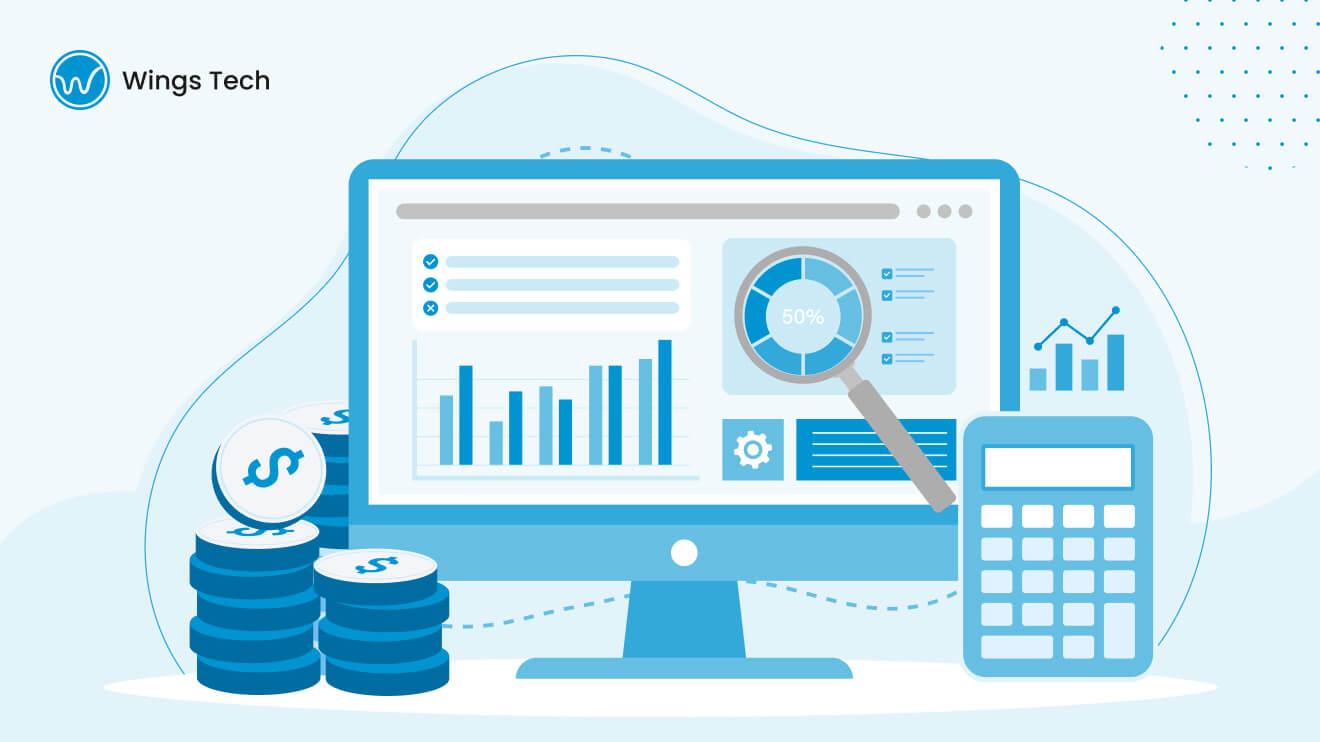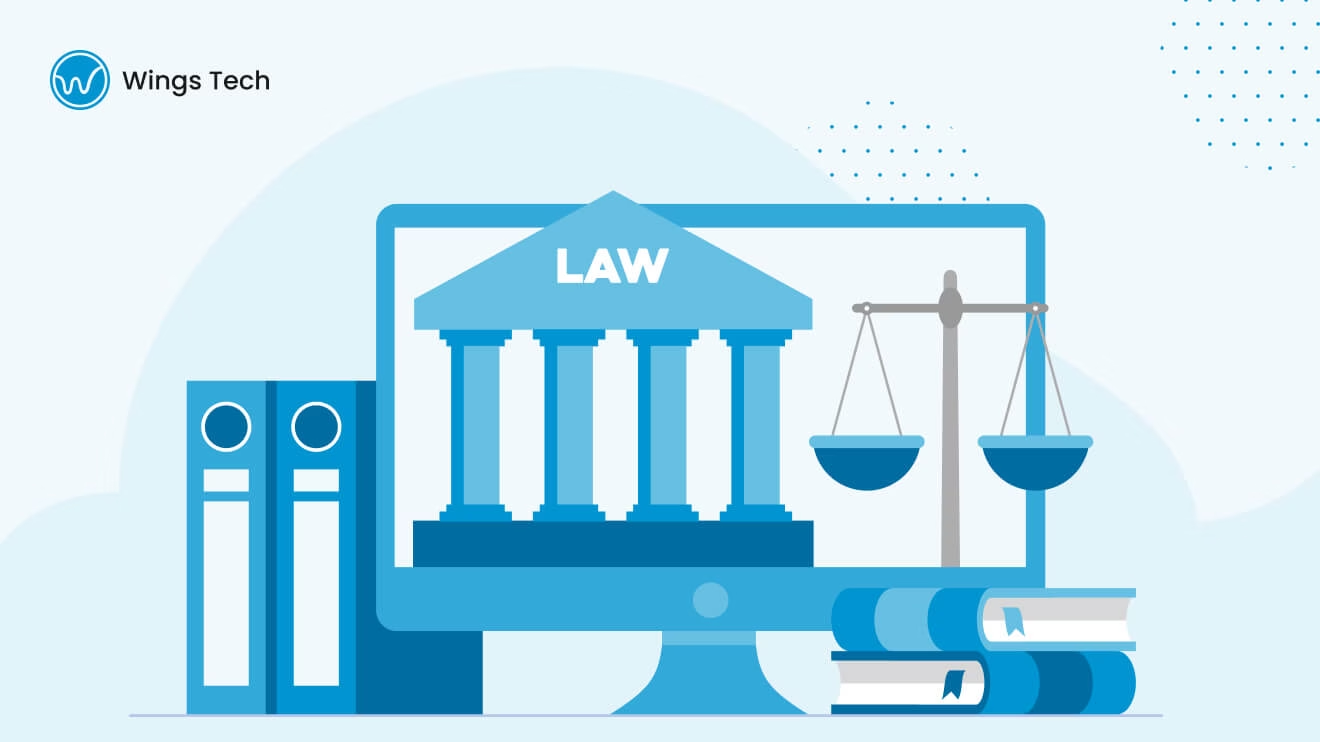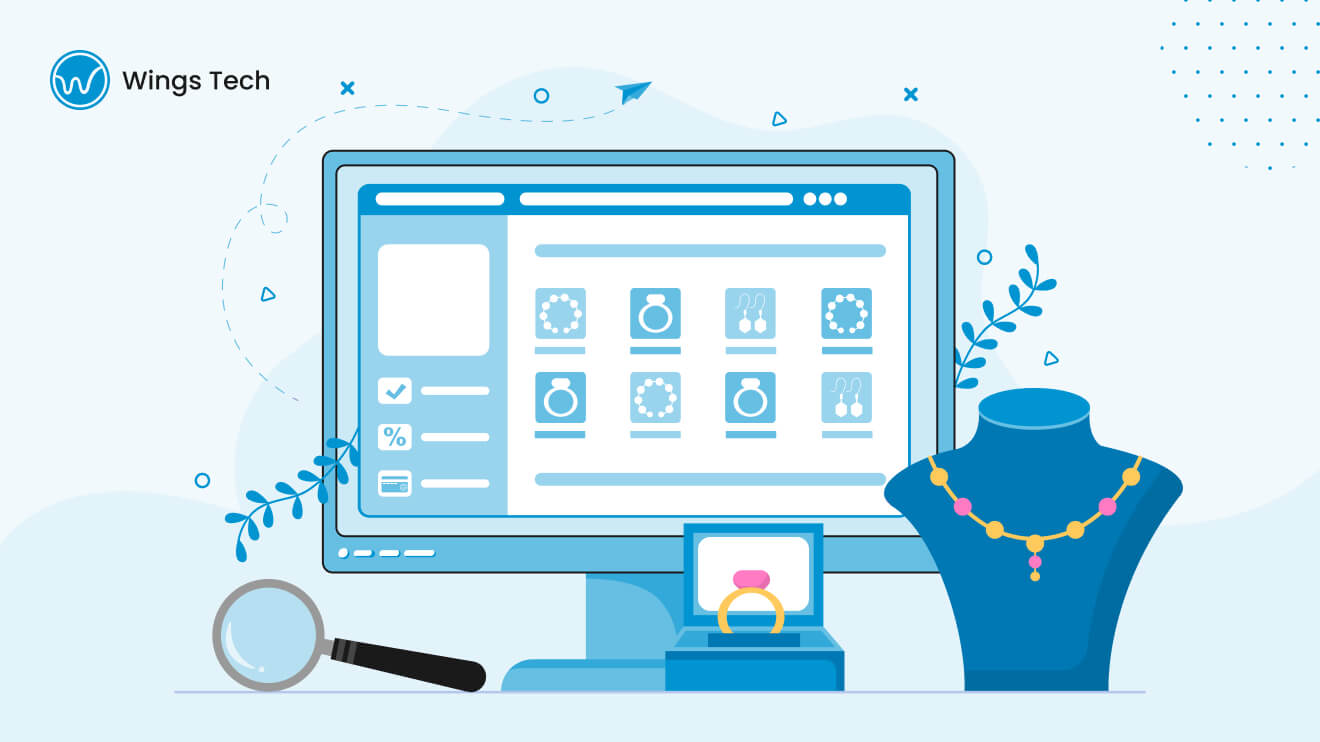Table of Contents
In 2025, your bank branch will talk to you via a browser, and your investment advisor could be an algorithm from a successful backend. This is all due to successful FinTech website development in 2025, which has revolutionized modern finance. FinTech websites are not just engineered platforms; they mix trust, technology, and much-needed transparency into a profitable equation.
Users do not forgive mistakes at all in the FinTech Industry, as the industry is now set to surpass $324B in 2026. As expectations are becoming higher and higher, users today will demand the sleekest experiences and the most bulletproof security ever in their FinTech website. This guide is your roadmap to building a business card, front desk, and vault, all rolled into one market-ready FinTech website.
What is FinTech Website Development?
At the surface level, FinTech website development is all about creating websites and apps that can offer financial services. Some examples are: online banking, payments, lending, insurance, investment platforms, and more. But, beneath all the UI UX, backend systems, and frontend feels, is the engineering of financial systems that people can trust without handshakes.
Technically, these platforms are secure back-end systems with regulatory compliance frameworks. These websites don’t just showcase your financial life, they host it. Every click in FinTech is a cognitive contract, where users are scrutinizing your website and validating its efficiency in real time. FinTech websites cannot stand in the market as a well-built marketing gimmick, as the system should also make their audience feel secure.
FinTech website development, this isn’t just responsive design, it is inculcating moral architecture into brands. Reassuring UI/UX, bulletproof data security, and mandatory compliance are all part of the package.
Why do you need a FinTech Website?
When investment advice today comes from bots instead of boardrooms and qualified personnel, FinTech website development needs to earn trust compulsorily. Here’s why FinTech websites can be the reason your deals close:
Builds trust and credibility
SSL encryption and compliance standards in your FinTech website will build your platform’s integrity by showcasing how secure it feels. Moreover, transparent pricing, visible security bridges, and a well-written privacy policy are the best trust signals your website can have.
Easy automation and self-service
Financial autonomy replaces your red tape in the best way. Your users need 24/7 access to their money, decisions, plus data – and this is what automated loan decisions, chatbots, and investment rebalancing do. This kind of automation removes human error and makes the whole experience more efficient than ever.
Improves customer experience and engagement
People don’t like complexities, and this is the real genius of a FinTech site. When someone logs in to pay their EMI or sends a lump sum amount of money abroad, they shouldn’t have to be a tech expert to go ahead. These kinds of personalized, bite-sized experiences with responsive UX are all you need.
Building a FinTech website is not just about having a website that can impress investors; it should also respect your users’ time, provide clarity, and be intelligent.
Looking for FinTech development experts?
Process of FinTech Website Development
A FinTech website development looks a lot like the process below, if you are building a trustworthy website:
Discovery & planning
Your FinTech journey should start with a mirror: who is your user, and why should they care? Rather than endlessly surveying or creating complex spreadsheets, you should nail down your audience, define your value proposition, and also document everything you realize. Selecting the right tech stack, jotting down the required functionalities is the most vital step.
Design phase
FinTech Website Design translates your services before you meet your customers. Creative wireframes and prototypes act as the blueprint of your FinTech idea, and they ensure that your platform speaks fluently across every screen. Functionality and simplicity in FinTech should go hand in hand, without creating complexities.
Development phase
Web design brags about what you are, but your front-end and back-end teams are what build the whole experience. In the development phase, every API integration and gateway connection is built to form a fully functional FinTech website.
Testing & QA
Testing your FinTech is key to earning your paycheck. Functionality checks, security audits, and phase safeguards are all part of a detailed QA process. Your FinTech can break in this phase, but it sure won’t break after launch.
Launch & maintenance
Going live is not the end, but it’s an IT team’s first day on the job. With continuous updates and real-time monitoring to keep your platform relevant, maintenance is always at the top of the process.
Technologies for Developing FinTech Websites
Frontend Technologies
These are the best tech options for FinTech website development:
- React.js: Component-based architecture is great for high-stakes environments like trading dashboards. It’s consistent and easily expandable according to the business vision.
- Angular: For adding structure and discipline to your FinTech, Angular is the best. It works well with large teams and enterprise-grade websites.
- Vue.js: Flexible and lightweight, Vue.js is great for fast-moving FinTech. It is more suitable for lean development teams.
- Microinteractions: Small animations and feedback loops act as important interactions that prompt users to take sensitive actions. For example: payments, fund transfers, or booking a call.
Backend technologies
These act as the brain behind the logic of your FinTech website:
- Node.js: Real-time capabilities such as live balance refresh or price updates for crypto.
- Python + Django: Most appropriate for startups or agile teams requiring rapid, secure deployment.
- Java: Enterprise-level, stable, and dependable, as it is most suitable for banks and institutions.
- PHP: PHP is still usable on legacy systems and supports agile, modular development in hybrid stacks of technology.
Databases
In databases, precision and privacy are important for ensuring transactional integrity in a FinTech website.
- PostgreSQL: Highly secure in encryption, data integrity, and transactional consistency—particularly suitable for essential financial data.
- MongoDB: Best for adaptive schemas and rapid changes across agile sprints.
- MySQL: Trustworthy and speedy, this is usually utilized on ledgers and live calculations.
APIs & Integrations
These APIs and integrations are the connectors that make things work behind the scenes. Let’s have a look at them:
- Payment Gateways: Smooth integration with Razorpay, Stripe, PayPal, etc.
- KYC/AML Verifications: Automates identity and anti-fraud verification.
- CRM & ERP Integrations: Offers real-time synchronization of operations, customer data, and sales.
- Open Banking APIs: Transform banks into platforms for facilitating third-party innovation and partnerships.
Want to launch your FinTech platform the right way?
Key Features of a FinTech Website
With FinTech, the website must pull its weight and reassure the users as well as guide them through the process cleverly. Here are some features that make a clear, compliant, and comforting FinTech website:
User-friendly dashboard
A well-structured dashboard in FinTech translates your tangled financial data into easily decipherable visuals. There could be intuitive graphs, subtle animations, or widgets that can respond to user actions without being complex.
Two-factor authentication
Passwords sound useless until there is a threat from hackers. These passwords help users verify their identity via text or an app. It is simple, but security needs to be invisible and straightforward.
Secure payment gateway
PCI-DSS compliant payment gateways like Stripe and CashApp are the most preferred choices as they make the users feel like the system is paying attention.
KYC/AML verification
AML and KYC are not just regulatory necessities, but they’re onboarding rituals. Automated systems now verify users while you’re still sipping your morning coffee.
Real-Time Notifications
No one enjoys surprise overdrafts. Push or in-app real-time alerts keep you informed. Login, transaction, or low balance, the app warns ahead of time before things go wrong.
Chatbot or Live Support
A smart chatbot (with live human backup as a fall-back) is someone’s 24/7 sidekick. By responding to FAQs, troubleshooting login frustration, and knowing when to refer back without being too mechanical.
Mobile Responsiveness
In 2025, FinTech has now become mobile-first. All functionality must be native on a 6-inch screen, not a desktop page shoehorned onto a phone.
Best Practices for FinTech Website Development
In FinTech, there is no margin for vague ideas or half-built promises. A successful platform is engineered with a lunar lander. This makes it secure, responsive, and human-centered.
Building such a good FinTech website development system doesn’t require magic, just discipline, good decisions, and a healthy idea about user trust.
Ensure Top-Notch Security Compliance (PCI DSS, GDPR)
Having good encryption, secure logins, and well-crafted data use terms is not optional. Innovative platforms go beyond that. They place those compliance badges where users can see them, so users can see that they are being handled by a secure firm.
Mobile-First Design
Most FinTech users aren’t visiting your website from mahogany desks; they are always moving around. A mobile-first strategy is not a miniaturized version of your desktop site. It’s a mindset change: thinking differently about navigation, prioritizing core actions, and laying it out so a left-handed coffee-cup holding commuter can purchase their phone.
Optimize for speed and performance
Speed is not a feature. It’s a user expectation. When a page loads slowly or hangs, users believe the whole system has crashed. Quick-loading assets, code optimization, and cloud-scale infrastructure keep the site running unnoticed.
Use clear CTAs and intuitive navigation
A financial technology website shouldn’t require a user guide. Users need thoughtful calls to action, walk-through instructions, and subtle iconography that doesn’t feel too complicated. Adding microinteractions to give subtle feedback makes the site more intuitive.
Regular security updates and audits
Cybersecurity isn’t a do-it-once-and-forget-it thing—it’s a dynamic target. Continuous updated vulnerability scanning, live monitoring, and periodic audits keep your platform ahead of the threats it’s facing.
How Much Does FinTech Website Development Cost?
FinTech website development is not just a one-line price tag; it’s calculated by trust, expansion plans, and uptime.
- Basic platforms with simple dashboards and standard logins cost between $5000 and $15000.
- For real-time analytics, KYC and AML, and best security, you are entering the $25000 to $100000 club.
- AI or blockchain – what is good? That’s not a cost, it’s a headline.
- Maintenance, hosting, and compliance are the fine print many skip. They’re your insurance policy in disguise.
Ready to create a feature-rich FinTech platform?
FinTech Web Design Trends in 2025
FinTech web design in 2025 is all about blending innovation and engagement.
Minimalist, Trust-Focused UI
Simplicity and clarity are at the heart of modern FinTech design. Minimalist interfaces reduce cognitive overload and build trust through transparency. They offer a clean layout with ample white space, bold headlines, and straightforward CTAs.
AI-Powered Finance Assistants
Artificial intelligence is transforming customer experience and financial planning. They offer personalized advice and automate budgeting, plus answer questions in real time.
Biometric Login
Security is paramount in FinTech, and biometric authentication, like fingerprint or facial recognition, is a frictionless way to provide it. Neobanks such as Bank of India have already started using biometric logins.
Gamified FinTech
Gamifying trader dashboards like trader2B is also transforming finance into a more engaging and enjoyable experience. Across the industry, interactive dashboards have feature progress bars and achievement badges. Many investment apps also reward users for reaching saving milestones or diversifying their portfolios. These gamified elements boost user engagement and retention, too.
How Wings Tech Can Help You Build Your FinTech Website
At Wings Tech, we’ve spent years perfecting the art of building financial technology platforms that work. We know that when you’re dealing with people’s finances, there’s no room for error. That’s why we focus on rock-solid security, bulletproof compliance, and creating websites that users find intuitive and trustworthy. Our developers have walked in your shoes and understand the unique challenges of the financial world. We believe in transparent communication and delivering on time, because we know your business depends on it.
Ready to Get Started? Let’s chat about your FinTech project over a free consultation. We’ll discuss your specific needs and create a personalized roadmap that fits your timeline and budget.
Why Choose Wings Tech for Your FinTech Journey
Creating a financial technology website isn’t like building a regular business site. You need partners who understand the intricate world of financial regulations, security protocols, and user trust. At Wings Tech, we’ve helped numerous clients navigate these complexities while building platforms that users love and regulators approve. Let’s work together to turn your FinTech idea into a thriving digital platform.









